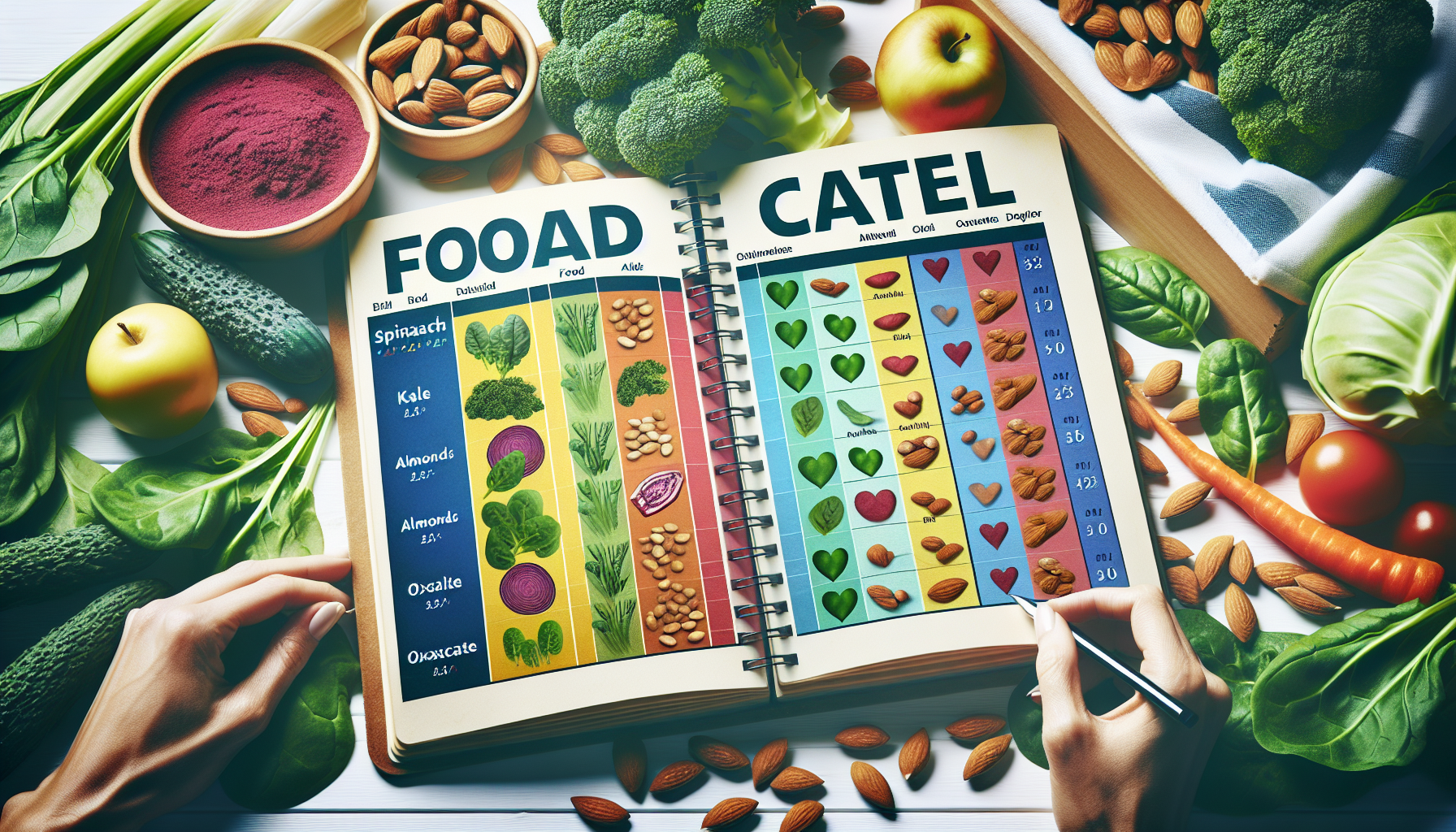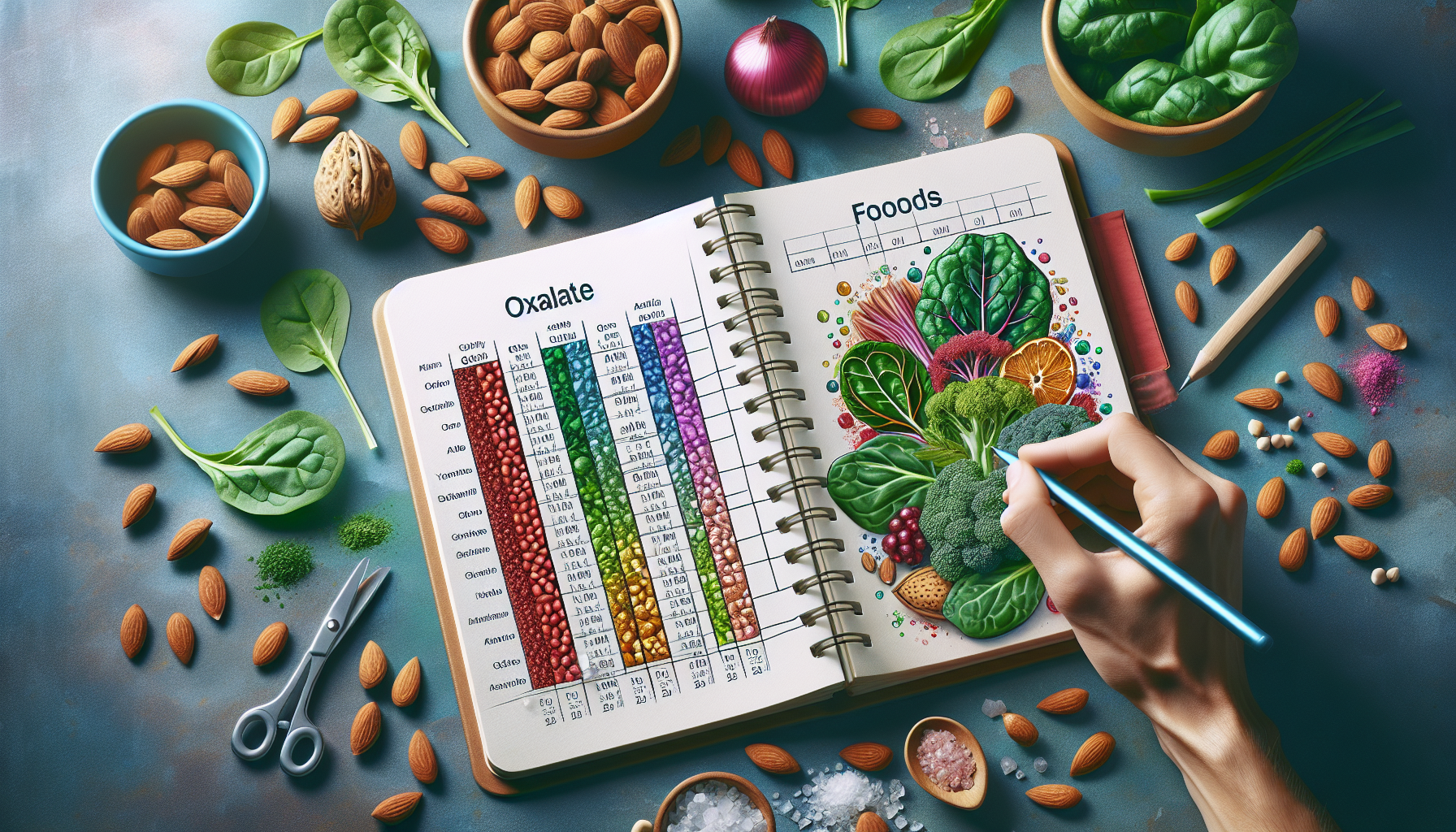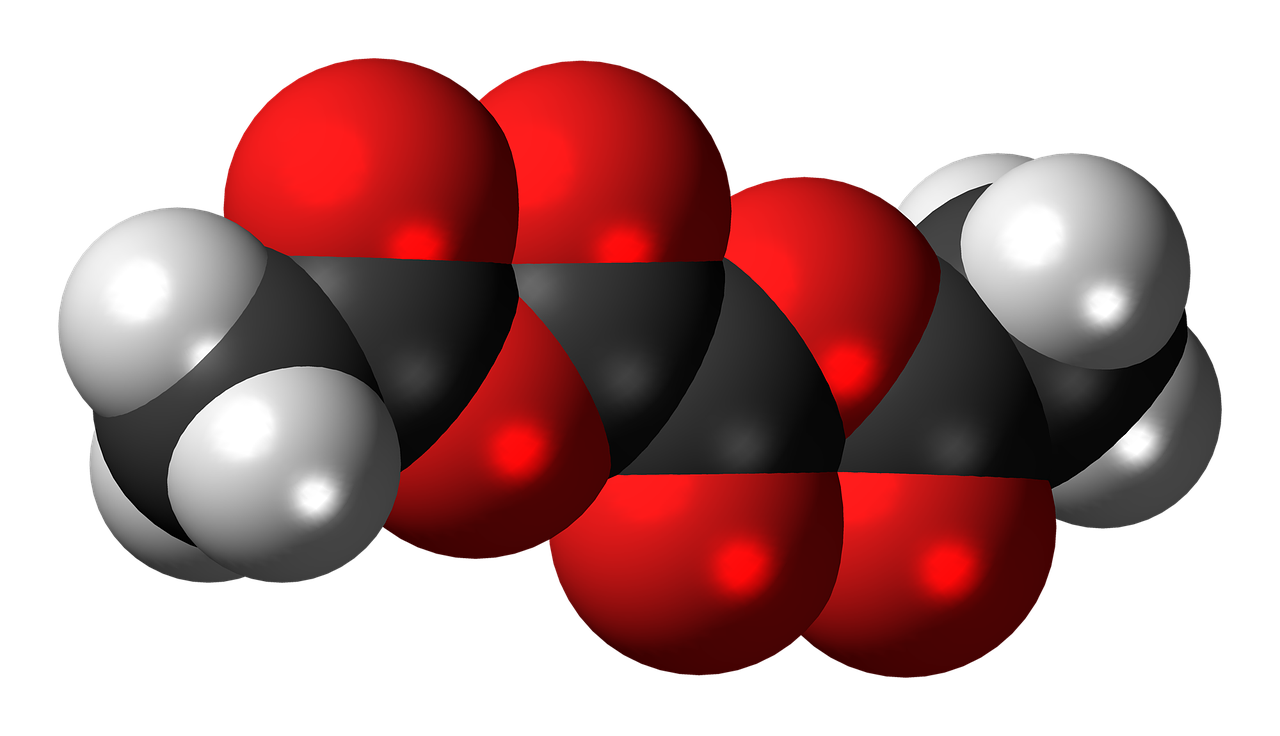Have you ever found yourself staring at a food chart and feeling completely lost? You’re not alone! Understanding oxalate food charts can be quite a challenge, but with the right approach, you can make sense of that information and use it to your advantage.
What Are Oxalates?
To navigate oxalate food charts effectively, you first need to understand what oxalates are. Oxalates, or oxalic acid, are naturally occurring substances found in many plants. They play a role in the plant’s defense system but can also affect human health, especially for those prone to kidney stones. So, if you’re looking to manage your oxalate intake, understanding these compounds is crucial.
Why Manage Oxalate Intake?
Managing your oxalate intake is particularly important if you have a history of kidney stones or specific health conditions like hyperoxaluria. High levels of oxalates in your diet can lead to a greater risk of forming kidney stones. By being mindful of what you eat and paying attention to oxalate content, you can significantly improve your health outcomes.
Understanding Oxalate Food Charts
When you open a food chart that outlines oxalate levels, you’re typically met with a list of foods, along with corresponding oxalate levels. These charts can categorize foods into different levels of oxalates, making it easier for you to choose which ones to consume and which to avoid.
Categories of Oxalate Levels
Most oxalate food charts classify foods into three main categories: low, moderate, and high oxalate foods. Here’s a breakdown of what each category might look like:
| Oxalate Level | Foods Examples |
|---|---|
| Low | Meat, fish, dairy, mushrooms, most fruits (like bananas and apples) |
| Moderate | Spinach, sweet potatoes, and nuts (like cashews) |
| High | Rhubarb, beets, and chocolate |
By understanding these categories, you can make informed decisions about what to include in your diet.

How to Read the Charts
Now that you know what oxalates are and how they’re categorized, the next step is to learn how to read those charts effectively. It might seem straightforward, but here are a few tips to simplify the process:
Pay Attention to Serving Sizes
One common oversight when reading oxalate charts is not considering serving sizes. Foods can have different oxalate levels depending on how much you eat. It’s essential to note whether the oxalate content listed is for a typical serving size or a larger portion. If you’re unsure, converting the amounts to familiar servings can help you understand your intake better.
Look for Contextual Information
Many charts will provide additional context, such as preparation methods that might affect oxalate levels. For example, boiling spinach can significantly reduce its oxalate content compared to eating it raw. Keep an eye out for such notes, as they can help you make better choices about food preparation.
Know Your Personal Limits
Understanding your oxalate tolerance is key. Everyone has different thresholds for oxalates based on their individual health situations. If you’ve been advised by a healthcare provider to limit oxalates, take note of your specific recommendations and adjust how you read the charts accordingly.
Creating Your Personalized Oxalate Management Plan
To effectively manage your oxalate intake, you need a personalized plan that suits your lifestyle and health needs. Here’s how to create one:
Identify Your Goals
Start by figuring out what you want to achieve by managing your oxalate intake. Whether it’s reducing kidney stone formation or improving overall health, having clear goals will help you stay focused.
Track Your Intake
Keeping a food diary can be beneficial. When you jot down what you eat and its corresponding oxalate level, patterns will emerge. You might notice which foods lead to discomfort or which ones fit well into your daily menu without causing issues.
Consult with a Healthcare Professional
Before making significant dietary changes, it’s always wise to consult with a healthcare professional, particularly if you’re managing a health condition. They can provide tailored advice that takes your specific circumstances into account.

Nutritional Balance
While it’s crucial to watch oxalate intake, it’s equally important to maintain a balanced diet. You don’t want to eliminate entire food groups that could provide essential nutrients. Therefore, you must strike a balance between managing oxalates and ensuring you get all of your dietary needs met.
High-Oxalate Foods to Be Aware Of
Certain foods can be quite high in oxalates and should be consumed with caution. Here are a few examples:
| Food | Oxalate Content (mg per 100g) |
|---|---|
| Spinach | 970 |
| Rhubarb | 500 |
| Beets | 200 |
| Nuts (certain types) | 200-400 |
| Dark chocolate | 250 |
Recognizing these foods will help you make informed choices when you’re shopping or meal planning.
Low-Oxalate Foods to Include
Conversely, there are plenty of delicious low-oxalate foods that you can enjoy without worry. Here’s a list of some tasty options:
| Food | Oxalate Content (mg per 100g) |
|---|---|
| Chicken | 0 |
| Eggs | 0 |
| Salmon | 0 |
| Apples | 2 |
| Bananas | 5 |
Incorporating these foods into your routine can help maintain a healthy and enjoyable diet while managing oxalate levels.
Cooking Techniques
Cooking techniques can also play a significant role in oxalate levels. Certain methods can reduce the amount of oxalates in foods, so being strategic in the kitchen is essential.
Boiling
Boiling vegetables like spinach significantly lowers their oxalate content. If you enjoy leafy greens, consider blanching them for a few minutes before adding them to your dishes.
Soaking and Sprouting Nuts and Grains
For those who enjoy eating nuts and grains, soaking or sprouting them can help reduce their oxalate levels. This technique can also improve digestibility.
Steaming and Baking
Steaming is another effective method, especially for vegetables. Unlike boiling, where nutrients can leach into the water, steaming keeps the nutrients intact while also helping lower oxalate levels.

Supplements and Alternatives
If you realize that you’re missing out on certain nutrients due to oxalate restrictions, consider looking into fortified foods or supplements. Many alternatives can help you maintain a balanced diet.
Calcium Supplements
For those who are managing oxalate levels, calcium can play a crucial role. Calcium binds with oxalates in the intestines, preventing their absorption. Therefore, if you’re not getting enough calcium through diet alone, it may be worth consulting with a healthcare provider about supplementation.
Plant-Based Alternatives
If you have to steer clear of certain high-oxalate foods, look for plant-based alternatives that are lower in oxalates but still tasty. Quinoa, for example, is gluten-free and a great source of complete protein that’s lower in oxalates.
Staying Informed
Navigating oxalate food charts is just one aspect of managing your diet. Staying informed about your dietary choices will empower you to make the best decisions for your health.
Online Resources
Several online resources provide updated information about oxalate levels in foods. Websites associated with health organizations or universities often have comprehensive databases that can help.
Apps for Tracking
In today’s digital age, numerous apps allow for easy tracking of dietary intake, including oxalate levels. Consider downloading one if you want to keep tabs on your nutrition conveniently.

Support Networks
Remember, you’re not in this alone! Connecting with others who are on a similar health journey can offer both camaraderie and useful tips.
Online Communities
Platforms like forums, social media groups, or specialized health communities can provide invaluable support. Sharing experiences with others who are managing oxalate levels can help you navigate the process more smoothly.
Speaking to a Dietitian
If you’re looking for more tailored advice, consider consulting a dietitian who specializes in oxalate management. They can help you create a well-rounded plan that suits your lifestyle and health needs.
Final Thoughts
Managing your oxalate intake doesn’t have to feel overwhelming. By understanding the basics of oxalates and how to read food charts, you’re already on the right path. Remember to focus on balanced nutrition and consult with professionals when needed. With a little effort and the right resources, you can effectively navigate oxalate food charts and make informed dietary choices.
As you start to make these changes, keep in mind that it’s a journey, not a sprint. Celebrate your progress and be patient with yourself as you adjust to a new way of eating. With time, you’ll find it easier to understand and manage your oxalate intake while still enjoying your meals.


